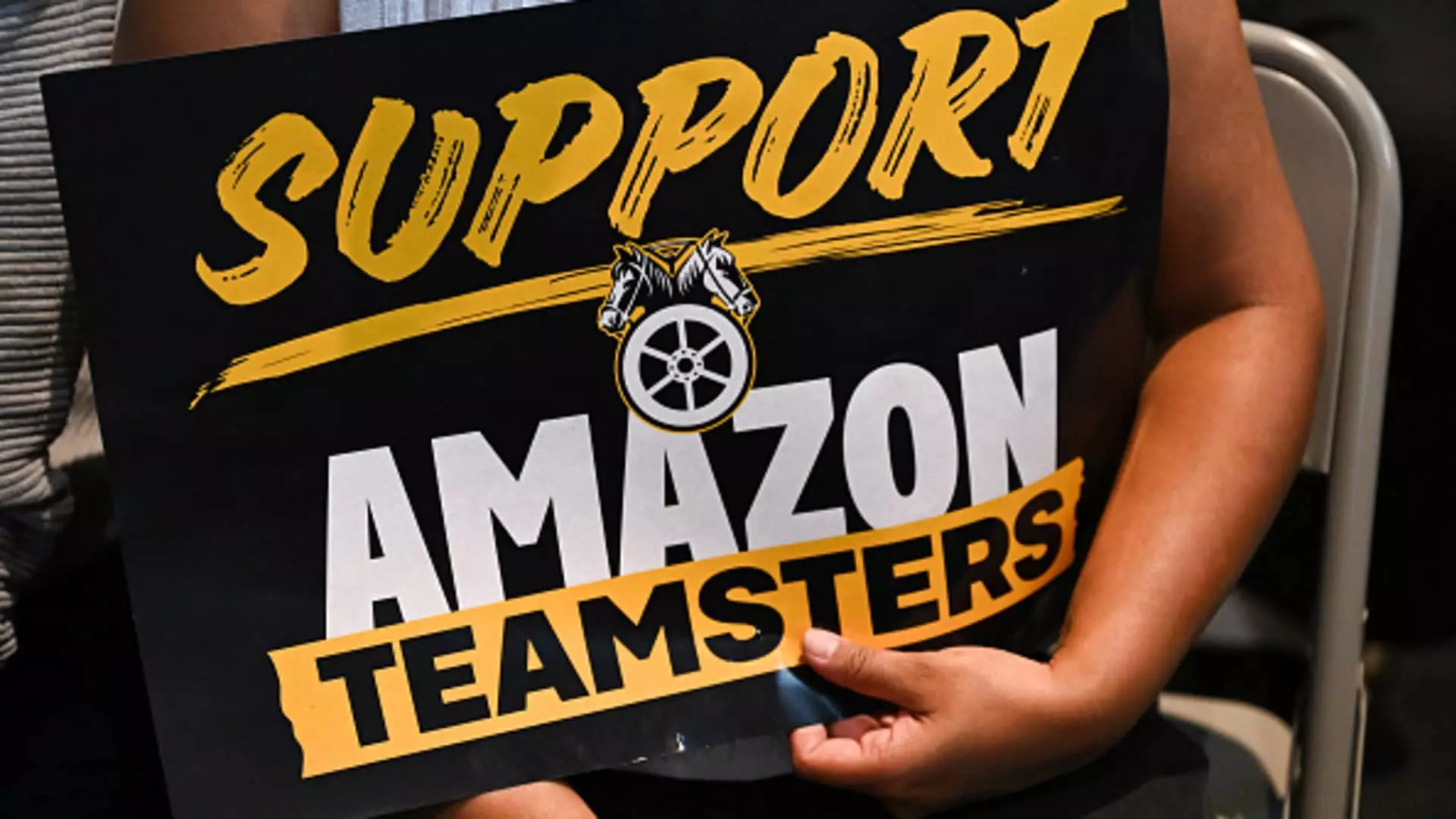In a significant development within the labor movement, a large group of Amazon delivery drivers at a New York facility has taken decisive action by aligning with the International Brotherhood of Teamsters. This unionization effort, announced on a recent Monday, emphasizes the growing momentum among logistics workers seeking improved conditions and representation. The drivers in question serve various contracted delivery firms, including Cornucopia Logistics, DnA Logistics, and Champion Logistics, all operating out of the Amazon delivery hub known as DBK4 in Queens.
The union’s announcement highlighted that a majority of these drivers had signed authorization cards indicating their desire to join the Teamsters. This collective action reflects a broader trend in the labor landscape, where workers across different sectors are increasingly banding together to advocate for their rights and improve their work environments.
The drivers’ requests are centered around essential workplace issues. They aspire for consistent scheduling, reliable and well-maintained delivery vehicles, and manageable workloads. In an industry rife with unpredictability and physical demands, these requests shine a light on the core issues that delivery workers face daily. The Teamsters’ spokesperson emphasized the urgency of these demands, pointing out that drivers serve as critical cogs in the logistics machine but are often sidelined in corporate discussions on working conditions.
Moreover, the recent elevation of labor pressure on Amazon, illustrated through instances of walkouts and public outcries for fair wages and improved safety standards, underscores a significant shift in worker sentiment. The challenges faced by delivery workers have garnered attention, prompting Amazon to announce a wage increase for contracted workers as part of a substantial investment aimed at addressing labor concerns.
The landscape for labor negotiations at Amazon may be poised for further transformation. The National Labor Relations Board (NLRB) has indicated that Amazon may qualify as a “joint employer” in its relationship with employees from subcontracted delivery firms. This designation is pivotal; it could legally obligate Amazon to engage in negotiations with drivers seeking union representation. Federal determinations such as these can significantly impact labor relations, creating expectations for employers to engage cooperatively with their workforce.
Sean O’Brien, general president of the Teamsters, highlighted this development, emphasizing Amazon’s legal duty to participate in negotiations that could reshape the landscape of worker rights. The union’s ambition extends far beyond this immediate group of drivers as they aim to mobilize and unify workers across Amazon’s vast delivery network.
The Teamsters’ efforts illustrate a broader strategy of engaging workers within Amazon’s extensive logistics apparatus. As the second-largest private employer in the United States, Amazon’s workforce holds substantial potential for collective bargaining power. With growing support from significant labor unions, there’s a renewed focus on advocating for warehouse and delivery personnel.
The current wave of unionization efforts may be just the beginning of a larger movement to transform the working conditions within one of the world’s most influential corporations. The outcome of these organizing efforts may not only determine the future for Amazon workers but also set precedent for labor relations across the delivery and logistics sectors nationwide.


Leave a Reply